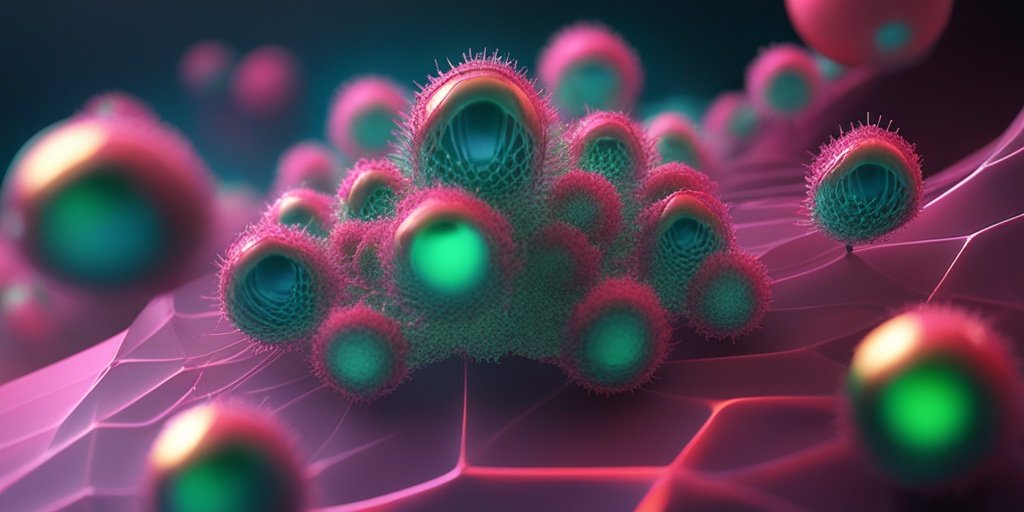⚡ Quick Summary
This study presents a novel approach to quantifying eosinophils in nasal polyps using an AI-based single cell binary classification network. The findings indicate that this technology can reliably assist in the characterization of eosinophilia, which is crucial for understanding various nasal conditions.
🔍 Key Details
- 📊 Focus: Eosinophilia in nasal polyps
- 🧩 Methodology: AI-based single cell binary classification network
- 🏆 Significance: Reliable quantification of eosinophils
- 📝 Authors: Stampe M, Christiansen IS, Backer V, et al.
- 📅 Publication: Int Forum Allergy Rhinol, 2024
🔑 Key Takeaways
- 🔬 Eosinophils are key players in various nasal diseases.
- 🤖 AI technology enhances the accuracy of eosinophil quantification.
- 📈 Single cell classification provides a detailed analysis of cellular morphology.
- 🌟 Potential applications in diagnosing and treating nasal polyps.
- 🔍 Future research could expand on AI applications in other inflammatory diseases.

📚 Background
Eosinophilic granulocytes are known for their distinct morphological features, making them essential in the study of various allergic and inflammatory conditions. Understanding eosinophilia in nasal polyps is particularly important, as it can influence treatment strategies and patient outcomes. Traditional methods of quantifying these cells can be labor-intensive and subjective, highlighting the need for innovative solutions.
🗒️ Study
The research conducted by Stampe et al. aimed to leverage the power of artificial intelligence to improve the quantification of eosinophils in nasal polyps. By employing a single cell binary classification network, the study sought to provide a more reliable and efficient method for analyzing eosinophilic granulocytes, which are often implicated in chronic rhinosinusitis and other nasal disorders.
📈 Results
The application of the AI-based classification network demonstrated a high level of accuracy in identifying and quantifying eosinophils within nasal polyp samples. This breakthrough technology not only streamlines the analysis process but also enhances the reliability of eosinophil quantification, paving the way for improved diagnostic capabilities in clinical settings.
🌍 Impact and Implications
The implications of this study are significant for both clinical practice and research. By integrating AI into the analysis of eosinophils, healthcare professionals can achieve more precise diagnoses and tailor treatment plans for patients with nasal polyps. Furthermore, this technology could be adapted for use in other inflammatory conditions, potentially transforming the landscape of allergy and immunology.
🔮 Conclusion
This study highlights the transformative potential of AI in medical diagnostics, particularly in the realm of eosinophilia and nasal polyps. As we continue to explore the capabilities of artificial intelligence in healthcare, we can anticipate more accurate, efficient, and personalized approaches to patient care. Continued research in this area is essential to fully realize the benefits of these technologies.
💬 Your comments
What are your thoughts on the integration of AI in the quantification of eosinophils? We would love to hear your insights! 💬 Join the conversation in the comments below or connect with us on social media:
Quantitative characterization of eosinophilia in nasal polyps with AI-based single cell classification.
Abstract
Eosinophilic granulocytes have characteristic morphological features. This makes them prime candidates for utilization of a single cell binary classification network. Single cell binary classification networks can reliably help quantify eosinophils in nasal polyps.
Author: [‘Stampe M’, ‘Christiansen IS’, ‘Backer V’, ‘Aanæs K’, ‘Homøe AS’, ‘Tidemandsen J’, ‘Nielsen EN’, ‘Rasmussen SLH’, ‘Hartvig R’, ‘Kiss K’, ‘Jensen THL’]
Journal: Int Forum Allergy Rhinol
Citation: Stampe M, et al. Quantitative characterization of eosinophilia in nasal polyps with AI-based single cell classification. Quantitative characterization of eosinophilia in nasal polyps with AI-based single cell classification. 2024; (unknown volume):(unknown pages). doi: 10.1002/alr.23454